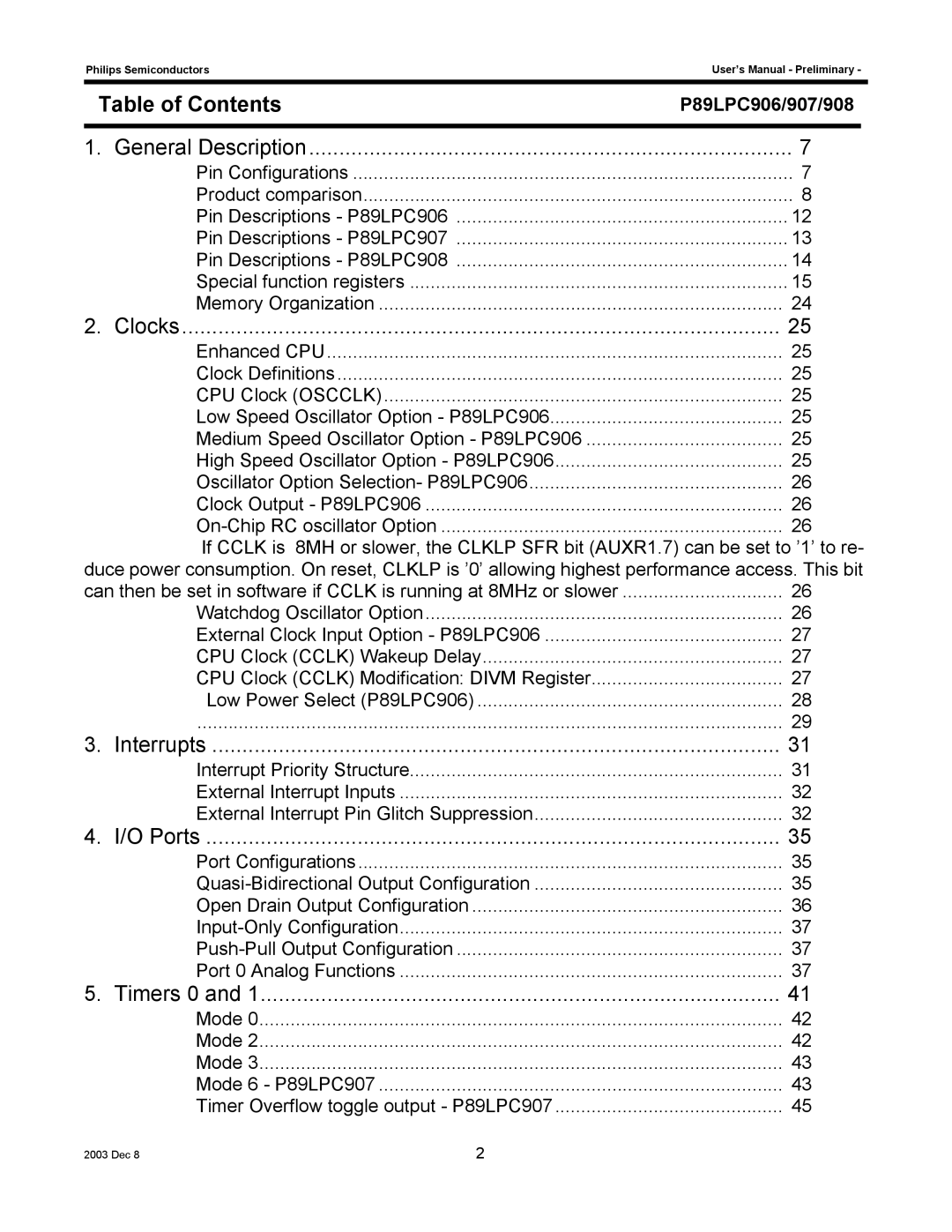Philips Semiconductors | User’s Manual - Preliminary - | |
Table of Contents | P89LPC906/907/908 | |
1. | General Description | 7 |
| Pin Configurations | 7 |
| Product comparison | 8 |
| Pin Descriptions - P89LPC906 | 12 |
| Pin Descriptions - P89LPC907 | 13 |
| Pin Descriptions - P89LPC908 | 14 |
| Special function registers | 15 |
| Memory Organization | 24 |
2. | Clocks | 25 |
| Enhanced CPU | 25 |
| Clock Definitions | 25 |
| CPU Clock (OSCCLK) | 25 |
| Low Speed Oscillator Option - P89LPC906 | 25 |
| Medium Speed Oscillator Option - P89LPC906 | 25 |
| High Speed Oscillator Option - P89LPC906 | 25 |
| Oscillator Option Selection- P89LPC906 | 26 |
| Clock Output - P89LPC906 | 26 |
| 26 | |
| If CCLK is 8MH or slower, the CLKLP SFR bit (AUXR1.7) can be set to ’1’ to re- | |
duce power consumption. On reset, CLKLP is ’0’ allowing highest performance access. This bit | ||
can then be set in software if CCLK is running at 8MHz or slower | 26 | |
| Watchdog Oscillator Option | 26 |
| External Clock Input Option - P89LPC906 | 27 |
| CPU Clock (CCLK) Wakeup Delay | 27 |
| CPU Clock (CCLK) Modification: DIVM Register | 27 |
| Low Power Select (P89LPC906) | 28 |
| ................................................................................................................. | 29 |
3. | Interrupts | 31 |
| Interrupt Priority Structure | 31 |
| External Interrupt Inputs | 32 |
| External Interrupt Pin Glitch Suppression | 32 |
4. | I/O Ports | 35 |
| Port Configurations | 35 |
| 35 | |
| Open Drain Output Configuration | 36 |
| 37 | |
| 37 | |
| Port 0 Analog Functions | 37 |
5. Timers 0 and 1 | 41 | |
| Mode 0 | 42 |
| Mode 2 | 42 |
| Mode 3 | 43 |
| Mode 6 - P89LPC907 | 43 |
| Timer Overflow toggle output - P89LPC907 | 45 |
2003 Dec 8 | 2 |
